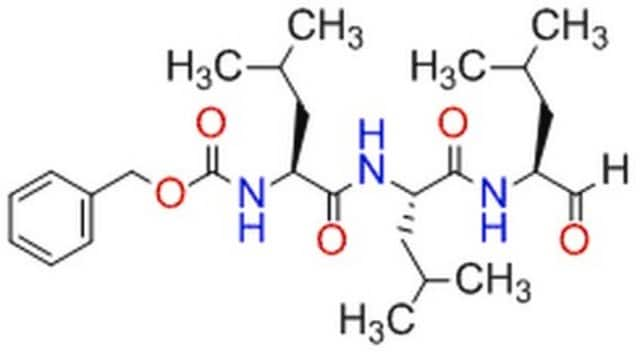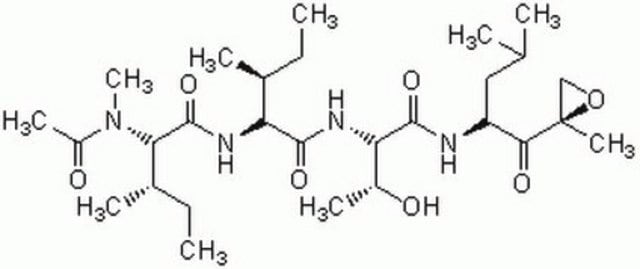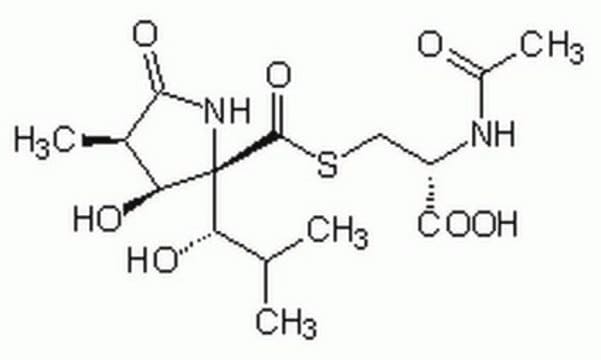474791
MG-132
InSolution, ≥98%, 10 mM, reversible proteasome inhibitor
Synonym(s):
Z-Leu-Leu-Leu-al, Carbobenzoxy-L-leucyl-L-leucyl-L-leucinal, Z-LLL-CHO, Proteasome Inhibitor XI, InSolution MG-132, MG-132
About This Item
Recommended Products
Quality Level
Assay
≥98% (HPLC)
form
liquid
manufacturer/tradename
Calbiochem®
storage condition
OK to freeze
protect from light
shipped in
wet ice
storage temp.
−20°C
SMILES string
[H]C(=O)[C@H](CC(C)C)NC(=O)[C@H](CC(C)C)NC(=O)[C@H](CC(C)C)NC(=O)OCc1ccccc1
InChI
1S/C26H41N3O5/c1-17(2)12-21(15-30)27-24(31)22(13-18(3)4)28-25(32)23(14-19(5)6)29-26(33)34-16-20-10-8-7-9-11-20/h7-11,15,17-19,21-23H,12-14,16H2,1-6H3,(H,27,31)(H,28,32)(H,29,33)/t21-,22-,23-/m0/s1
InChI key
TZYWCYJVHRLUCT-VABKMULXSA-N
Looking for similar products? Visit Product Comparison Guide
Amino Acid Sequence
General description
Biochem/physiol Actions
Packaging
Warning
Physical form
Other Notes
Adams, J., and Stein, R. 1996. Ann. Rep. Med. Chem.31, 279.
Lee, D.H., and Goldberg, A.L. 1996. J. Biol. Chem.271, 27280.
Wiertz, E.J.H.J., et al. 1996. Cell84, 769.
Read, M.A., et al. 1995. Immunity2, 493.
Rock, K.L., et al. 1994. Cell78, 761.
Legal Information
Storage Class Code
10 - Combustible liquids
WGK
WGK 2
Flash Point(F)
188.6 °F - closed cup - (Dimethylsulfoxide)
Flash Point(C)
87 °C - closed cup - (Dimethylsulfoxide)
Certificates of Analysis (COA)
Search for Certificates of Analysis (COA) by entering the products Lot/Batch Number. Lot and Batch Numbers can be found on a product’s label following the words ‘Lot’ or ‘Batch’.
Already Own This Product?
Find documentation for the products that you have recently purchased in the Document Library.
Customers Also Viewed
Related Content
Select different protease inhibitor types based on your needs to prevent protein degradation during isolation and characterization and safeguard proteins in sample prep.
Our team of scientists has experience in all areas of research including Life Science, Material Science, Chemical Synthesis, Chromatography, Analytical and many others.
Contact Technical Service











